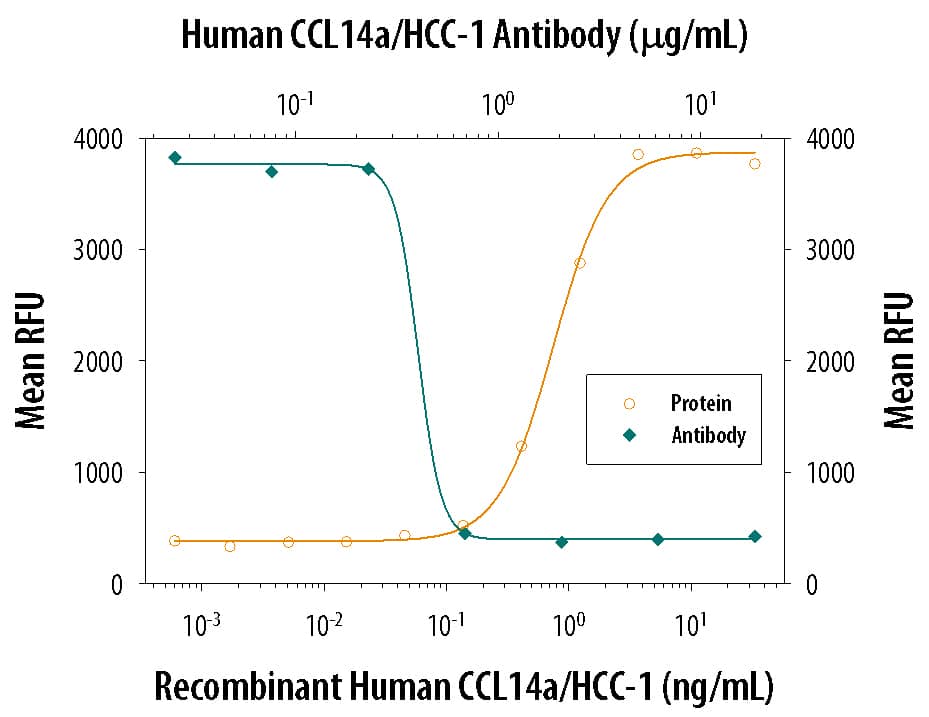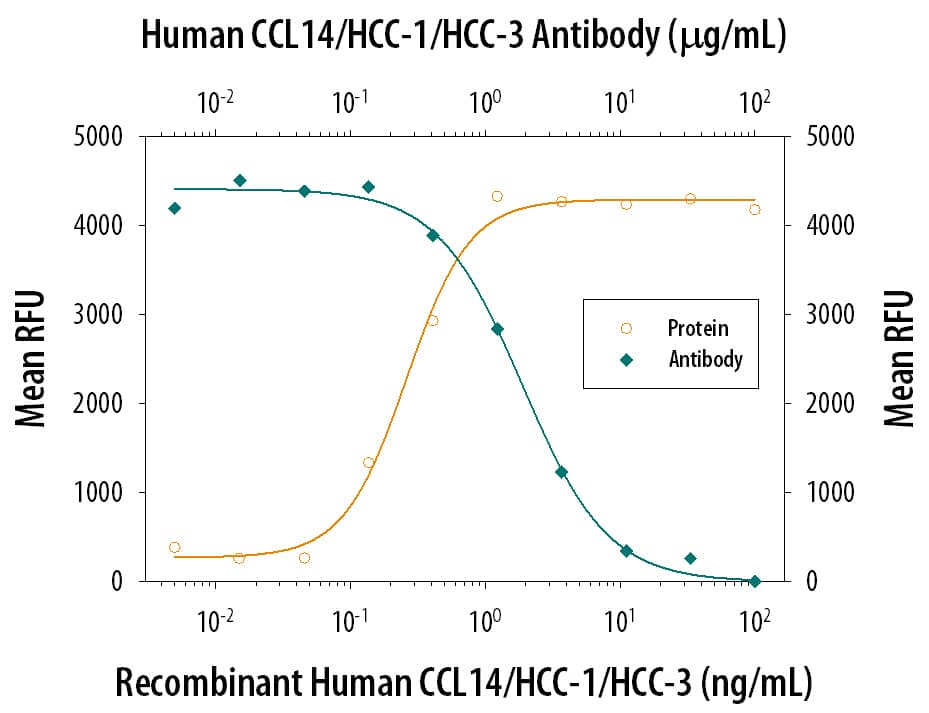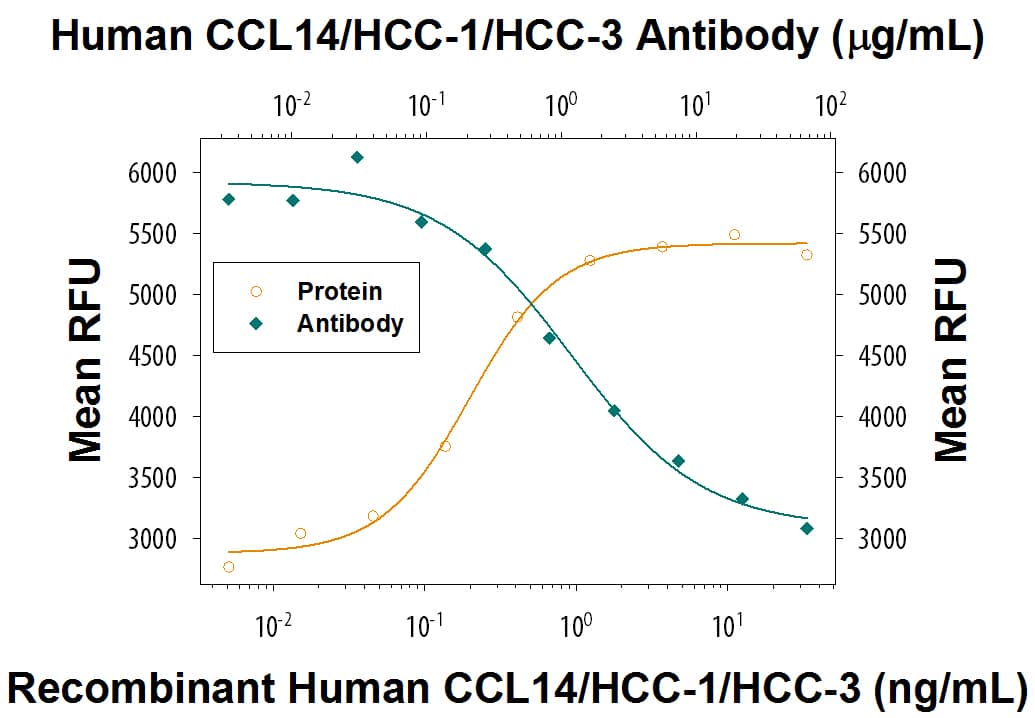CCL14a/HCC-1 Products
CCL14, is a member of the chemokine superfamily of ligands. In-depth genome analysis has determined that there is no mouse ortholog for human CCL14. Two alternatively spliced isoforms of CCL14, CCL14a/HCC-1 and CCL14b/HHC-3, have been identified. The CCL14a/HCC-1 isoform is a 93 amino acid (aa) precursor peptide with a predicted molecular weight of 10 kDa, while the CCL14b/HCC-3 isoform contains an additional 17 aa insertion and has a predicted molecular weight of 12 kDa. CCL14a/HCC-1 is cleaved into a 74 aa secreted bioactive peptide by Plasmin or u-Plasminogen Activator/Urokinase. CCL14a/HCC-1 binds and activates CCR1, CCR3, and CCR5; it also binds the non-signaling chemokine decoy receptors DARC and D6. CCL14a/HCC-1 is widely expressed in normal tissues including spleen, liver, skeletal and heart muscle, gut, and bone marrow, and it circulates at high concentrations in the plasma. CCL14a/HCC-1 induces the chemotaxis of T lymphocytes, monocytes, and eosinophils. It also exhibits anti-HIV activities by causing CCR5, a key mediator of HIV entry, internalization and intracellular sequestration.
6 results for "CCL14a/HCC-1" in Products
6 results for "CCL14a/HCC-1" in Products
CCL14a/HCC-1 Products
CCL14, is a member of the chemokine superfamily of ligands. In-depth genome analysis has determined that there is no mouse ortholog for human CCL14. Two alternatively spliced isoforms of CCL14, CCL14a/HCC-1 and CCL14b/HHC-3, have been identified. The CCL14a/HCC-1 isoform is a 93 amino acid (aa) precursor peptide with a predicted molecular weight of 10 kDa, while the CCL14b/HCC-3 isoform contains an additional 17 aa insertion and has a predicted molecular weight of 12 kDa. CCL14a/HCC-1 is cleaved into a 74 aa secreted bioactive peptide by Plasmin or u-Plasminogen Activator/Urokinase. CCL14a/HCC-1 binds and activates CCR1, CCR3, and CCR5; it also binds the non-signaling chemokine decoy receptors DARC and D6. CCL14a/HCC-1 is widely expressed in normal tissues including spleen, liver, skeletal and heart muscle, gut, and bone marrow, and it circulates at high concentrations in the plasma. CCL14a/HCC-1 induces the chemotaxis of T lymphocytes, monocytes, and eosinophils. It also exhibits anti-HIV activities by causing CCR5, a key mediator of HIV entry, internalization and intracellular sequestration.
| Assay Range: | 15.6 - 1,000 pg/mL |
| Applications: | ELISA |
| Reactivity: | Human |
| Details: | Goat IgG Polyclonal |
| Applications: | WB |
| Reactivity: | Human |
| Details: | Goat IgG Polyclonal |
| Applications: | WB, Neut |
| Reactivity: | Human |
| Details: | Rat IgG2a Monoclonal Clone #256409 |
| Applications: | WB, Neut |
Recombinant Monoclonal Antibody.
| Reactivity: | Human |
| Details: | Rat IgG2a Monoclonal Clone #256409R |
| Applications: | WB, Neut |
| Reactivity: | Human |
| Details: | Rat IgG2a Monoclonal Clone #256413 |
| Applications: | WB |




